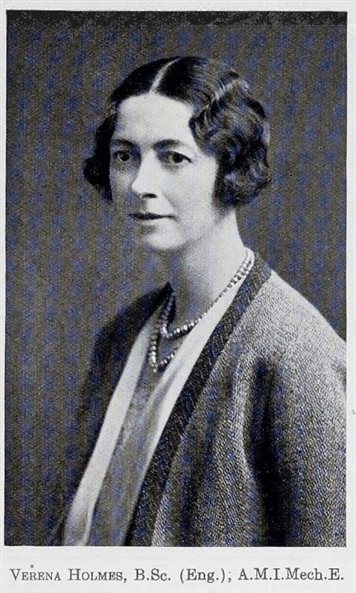Today, 23rd of June, on what would have been her 136th birthday, we celebrate the remarkable life and legacy of Verena Winifred Holmes—a pioneering English mechanical engineer, inventor, and passionate advocate for women in engineering.
A Woman Ahead of Her Time
Woman Ahead of Her Time
Born in Ashford, Kent, Verena Holmes grew up in a world where engineering was considered a man’s domain. But that didn’t stop her. From a young age, she was curious about how things worked—often dismantling her toys just to see what was inside.
Her engineering journey began during the First World War, when she joined the Integral Propeller Company in Hendon, building wooden aircraft propellers. She studied at night while working full-time, eventually earning a BSc in Engineering from Loughborough Engineering College in 1922—a rare feat for a woman at the time.
Breaking Barriers
Verena Holmes was a true trailblazer:
- First woman elected to the Institution of Mechanical Engineers (1924)
- First woman admitted to the Institution of Locomotive Engineers (1931)
- President of the Women’s Engineering Society (WES) in 1931—the first practising engineer to hold the role
She didn’t just open doors—she built them.
Inventor Extraordinaire
Holmes held 12 patents, many of which addressed real-world problems with practical, forward-thinking solutions. Her inventions spanned both medical and mechanical fields, showcasing her versatility and ingenuity.
Notable Inventions:
- Pneumo-thorax apparatus: Designed to treat tuberculosis by collapsing the lung to allow it to rest and heal. This device was a significant advancement in respiratory medicine before the advent of antibiotics.
- Surgeon’s headlamp: A hands-free, focused light source that improved visibility during operations. This innovation laid the groundwork for modern surgical lighting systems used in operating theatres today.
- Valve gear for steam and internal combustion engines: Holmes developed a more efficient valve mechanism that improved engine performance and reliability. Her work contributed to the evolution of engine design, influencing both automotive and locomotive engineering.
- Safety devices for marine engines: She designed components that enhanced the safety and efficiency of ship engines, helping to reduce mechanical failures at sea.
Her inventions were not only technically sound but also ahead of their time, often addressing needs that would become more widely recognised in later decades.
Impact on Modern Engineering
Verena Holmes’ influence extends far beyond her patents. She was a systems thinker who understood the importance of integrating engineering with human needs. Her medical devices, for instance, demonstrated how engineering could directly improve quality of life.
She also helped redefine the role of women in engineering, proving that technical excellence knows no gender. By co-founding a company in 1946 specifically to employ female engineers, she created opportunities for women at a time when few existed.
Today, her legacy is visible in:
- The increasing number of women entering STEM fields
- The continued innovation in medical engineering
- The emphasis on inclusive design and engineering for social good
We’d love to hear your thoughts:
Had you heard of Verena Holmes before today? Which of her inventions do you find most impressive? How do you think her legacy influences engineering today?
Share your thoughts in the comments below.
#OnThisDay